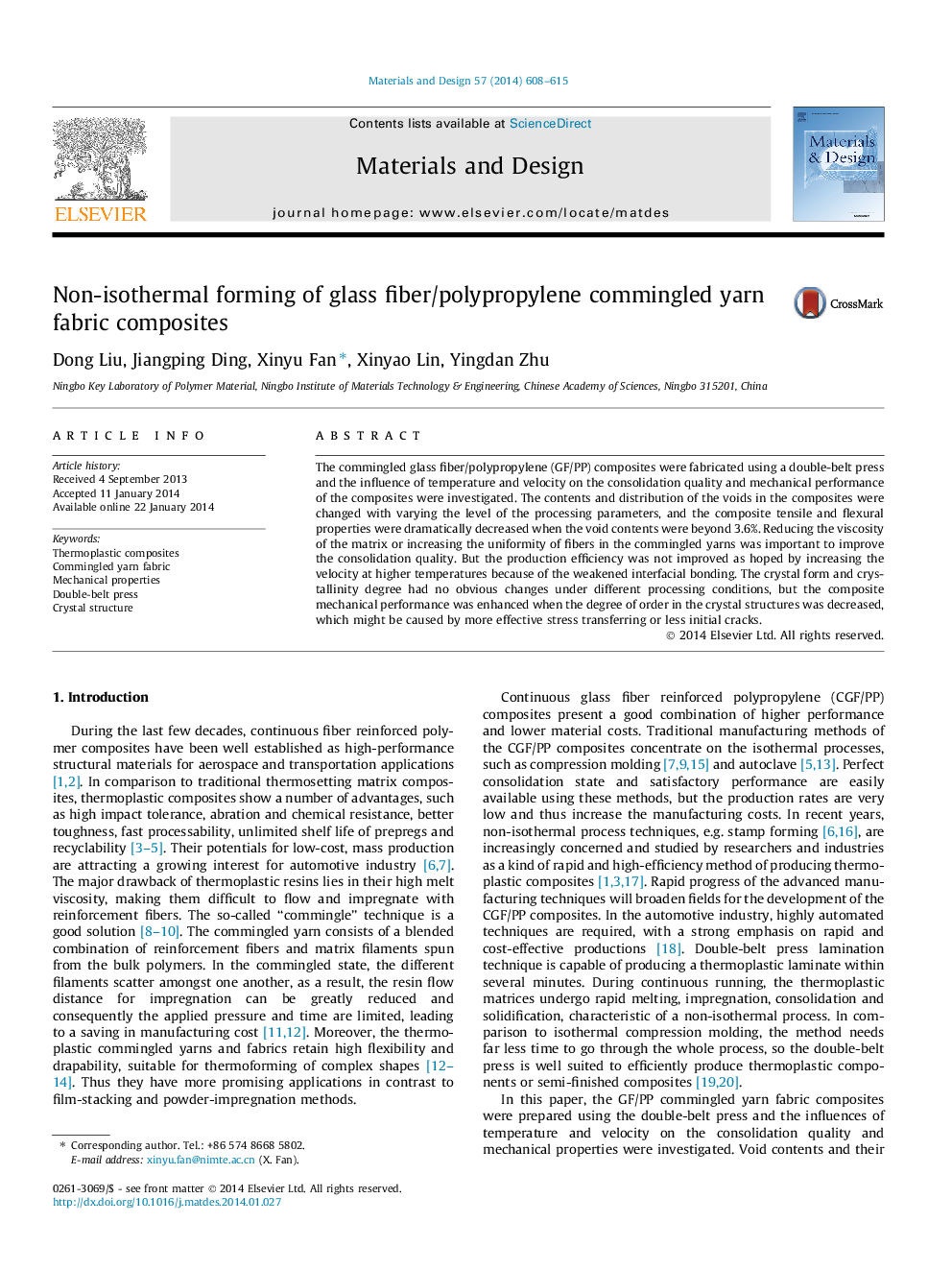| Article ID | Journal | Published Year | Pages | File Type |
|---|---|---|---|---|
| 829386 | Materials & Design (1980-2015) | 2014 | 8 Pages |
•Double-belt press is a high-efficiency technique to produce commingled thermoplastic composites.•Consolidation quality and mechanical performance are dramatically affected by temperature and velocity.•Productivity is not increased at higher temperature and velocity conditions due to the weakened interface.•The mechanical performance is instead enhanced with the decrease of order in the crystalline structures.
The commingled glass fiber/polypropylene (GF/PP) composites were fabricated using a double-belt press and the influence of temperature and velocity on the consolidation quality and mechanical performance of the composites were investigated. The contents and distribution of the voids in the composites were changed with varying the level of the processing parameters, and the composite tensile and flexural properties were dramatically decreased when the void contents were beyond 3.6%. Reducing the viscosity of the matrix or increasing the uniformity of fibers in the commingled yarns was important to improve the consolidation quality. But the production efficiency was not improved as hoped by increasing the velocity at higher temperatures because of the weakened interfacial bonding. The crystal form and crystallinity degree had no obvious changes under different processing conditions, but the composite mechanical performance was enhanced when the degree of order in the crystal structures was decreased, which might be caused by more effective stress transferring or less initial cracks.
